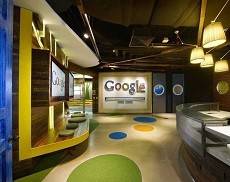March 19, 2015
Office workers report difficulties with remote communications technology
 Just as the adoption of digital communications technology is making the one-person per desk workstation model look outmoded, the design and layout of the typical conference room is no longer suitable for remote communications. That is one of the findings of a new survey by Steelcase which found that despite, or rather because of advances in technology, office workers are having difficulties when trying to communicate with work colleagues based elsewhere. The problem, which Steelcase has coined presence disparity can lead to an overall collaboration experience which is best described as unpleasant and taxing, with participants feeling strained physically, cognitively and emotionally. This isn’t helped by the fact that conference rooms, the most used spaces for videoconferencing, usually feature long rectangular tables designed for face to face meetings, not those to camera.
Just as the adoption of digital communications technology is making the one-person per desk workstation model look outmoded, the design and layout of the typical conference room is no longer suitable for remote communications. That is one of the findings of a new survey by Steelcase which found that despite, or rather because of advances in technology, office workers are having difficulties when trying to communicate with work colleagues based elsewhere. The problem, which Steelcase has coined presence disparity can lead to an overall collaboration experience which is best described as unpleasant and taxing, with participants feeling strained physically, cognitively and emotionally. This isn’t helped by the fact that conference rooms, the most used spaces for videoconferencing, usually feature long rectangular tables designed for face to face meetings, not those to camera.
























March 18, 2015
What the colonisation of new domains tells us about how we work
by Charles Marks • Architecture, Cities, Comment, Flexible working
More →